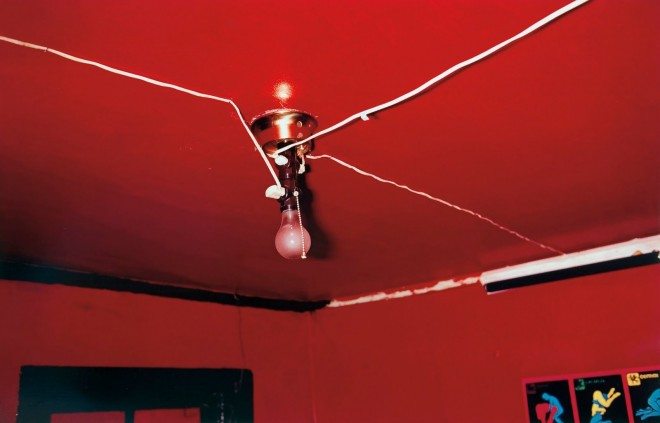Known for his rich and complex images of the American South, William Eggleston is largely credited with establishing the acceptance of colour in fine art photography.
Eggleston began to experiment with colour in the 1960s. At that time, colour photography was principally associated with commercial industries such as advertising, and was considered unsuitable for fine art photography. In 1972 he started to make prints using a highly complex and expensive process called ‘dye transfer’, which allows various colours within a photographic print to be printed as separations. Each colour is printed in its richest form, maintaining strong red and green tones within a single image. The prints are also extremely durable and will not fade.
Mostly shooting in and around his hometown of Memphis, Tennessee, Eggleston depicts the banal and everyday. His work is frequently characterised by elements such as bold colourful interiors, cars and gasoline stations, and portraits of individuals known to Eggleston as well as strangers encountered in the street. Eggleston pays close attention to the formal organisation of the frame, often employing diagonal lines and reflections, but he also relishes strong contrasts in colour with vivid reds, blues and greens.
Though these images record a particular place at a certain point in time, Eggleston is not interested in their documentary qualities. Instead, when asked what he is photographing, Eggleston simply answers ‘Life today’.
William Eggleston was born in 1939 in Memphis, Tennessee, where he lives and works.



William Eggleston in my opinion has the ability to make the everyday , epic. My memory box project is also everyday and I will be taking inspiration from Eggleston whilst photographing my final images . Snap shot aesthetics , bold colours and a different perspective of the everyday . His images often consist of a tight crop , hiding the fuller scene and often his compositions are un even with main focuses being at either side of the frame .
I want to have William Egglestons frame of mind when I start to shoot for my final series of images and make the everyday , unordinary . It has also come to my attention that in a number of Egglestons portraits are purposely made anonymous by either cropping out there heads or just making sure they are faceless in the portraits . After Camera Lucida and Barthes decision not to show the image of his mother in the winter garden , the research I have conducted on affect theory and the copious amounts on un-stereotypical family album. I think it is only fitting that like William Eggleston I leave me models which will be my family I will be experimenting with faceless portraits and concentrate on the connection between there body language and there memory box.



No comments:
Post a Comment